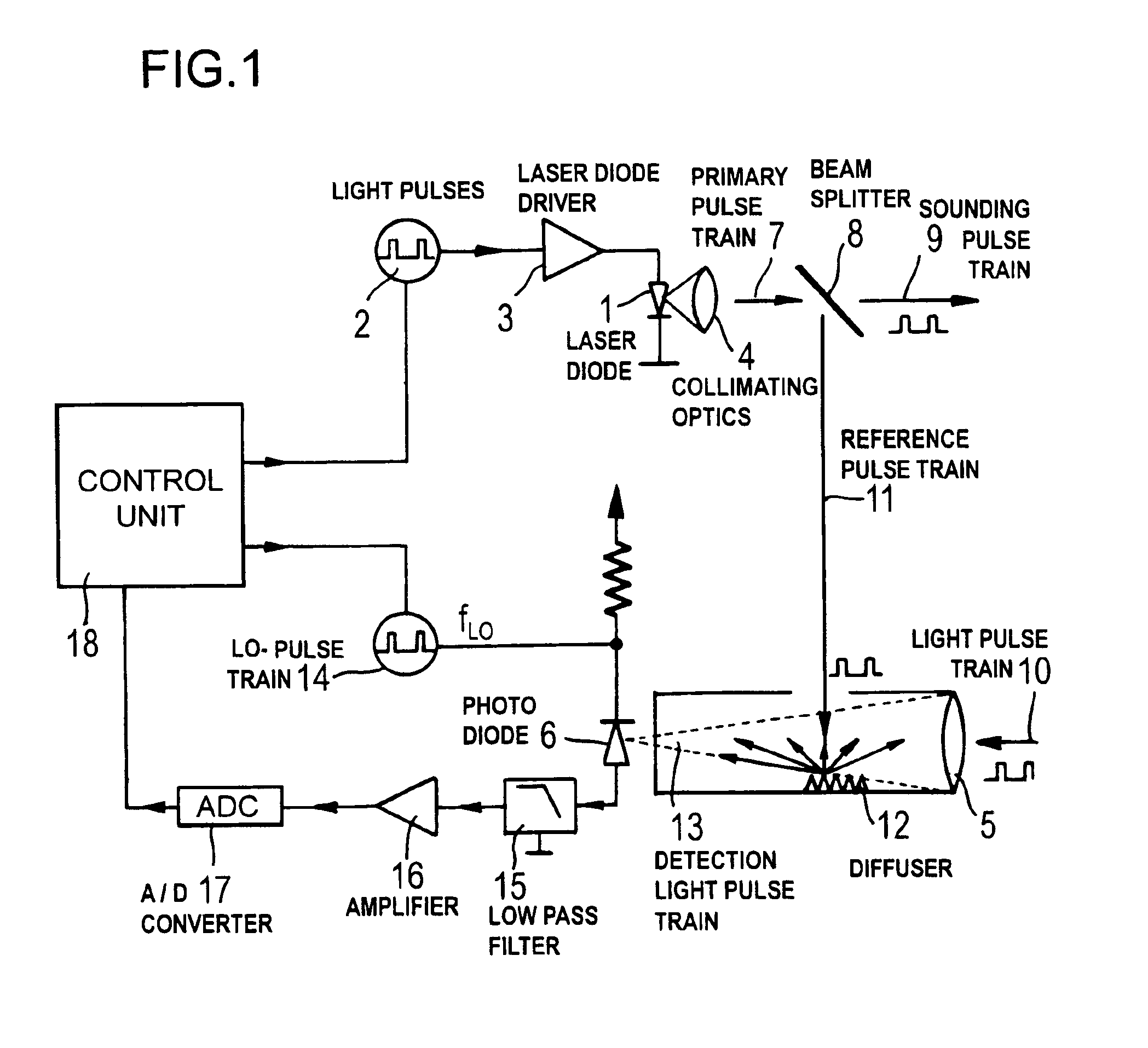Method of and apparatus for electro-optical distance measurement
a technology of distance measurement and apparatus, applied in distance measurement, instruments, surveying and navigation, etc., can solve the problems of reducing production tolerance, reducing production costs, and production time, and achieve high accuracy, high protection of human eyes, and high reliability
- Summary
- Abstract
- Description
- Claims
- Application Information
AI Technical Summary
Benefits of technology
Problems solved by technology
Method used
Image
Examples
Embodiment Construction
[0067]As discussed above, FIG. 1 shows a principle circuit diagram and system layout of a device for effecting a distance-measurement method, according to the present invention. Such a method is called a reflection pulse mixing method.
[0068]According to the present invention, the intensity and / or power of a beam emitted by a laser diode 1 are periodically modulated by light pulses 2 from a modulation pulse train. The pulse train is generated by a signal pulse generator (not shown) and is transmitted by a laser diode driver 3 to the laser diode 1. In distinction from a conventional method, in which a light pulse propagation time is used, the method according to the present invention uses pulses with a high repetition frequency of, e.g., 200 MHz or with a small time duration of 5 ns. The duty factor, e.g., is about 5%. Thus, according to the equation (2a), a pulse luminous power of 50 mW can be used with a sight-safe operation of the device. The mean luminous power amounts to 1 mW, an...
PUM
 Login to View More
Login to View More Abstract
Description
Claims
Application Information
 Login to View More
Login to View More - R&D
- Intellectual Property
- Life Sciences
- Materials
- Tech Scout
- Unparalleled Data Quality
- Higher Quality Content
- 60% Fewer Hallucinations
Browse by: Latest US Patents, China's latest patents, Technical Efficacy Thesaurus, Application Domain, Technology Topic, Popular Technical Reports.
© 2025 PatSnap. All rights reserved.Legal|Privacy policy|Modern Slavery Act Transparency Statement|Sitemap|About US| Contact US: help@patsnap.com



